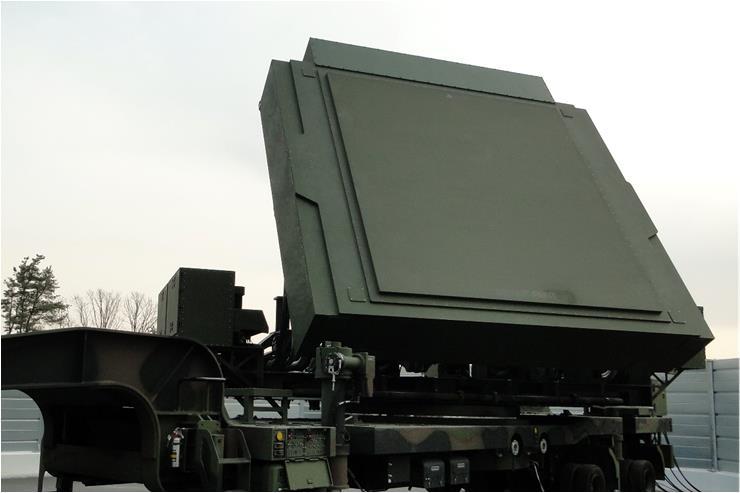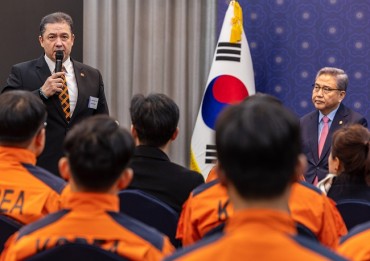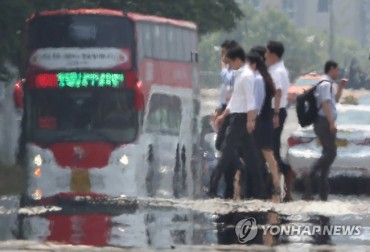
Shown in this photo provided by Hanwha Systems on April 10, 2022, is the multi-function radar (MFR) of the long-range surface-to-air missile (L-SAM) system.
SEOUL, June 1 (Korea Bizwire) — South Korea succeeded in a test of a key homegrown missile interceptor under development earlier this week, the third such success out of four tests so far, as it is cranking up efforts to deter evolving North Korean threats.
On Tuesday, the state-run Agency for Defense Development (ADD) revealed to the press corps the whole process of the interception test on the Long-range Surface-to-Air Missile (L-SAM) at its Anheung testing site in Taean, 109 kilometers southwest of Seoul, for the first time.
The L-SAM is a three-stage structure, including the final-stage “Kill Vehicle.”
Designed to shoot down an incoming ballistic missile at altitudes of 50-60 kilometers, it is a key element of the country’s low-tier multilayered anti-missile shield, called the Korea Air and Missile Defense (KAMD).
On a large screen at the testing site, the Kill Vehicle was seen accurately hitting a target missile after the successful separation of its first and second stages — a spectacle also watched by government officials and research staff, including Defense Minister Lee Jong-sup.
“The L-SAM capability that extends the missile defense to the upper layer of the terminal phase (of a missile flight) will not only improve the capabilities to respond to North Korean missile threats but also contribute greatly to strengthening the missile defense capability of the South Korea-U.S. alliance,” Lee said.
Since November last year, the ADD has conducted four L-SAM interception tests. Of them, three tests, including the latest, succeeded.
The defense ministry said that it plans to complete the L-SAM development by next year, embark on the mass-production phase in 2025 and start deploying the interception system in the late 2020s.
South Korea’s KAMD program consists of multiple interception systems, including the Patriot Advanced Capability-3 missile and the Cheongung-II medium-range surface-to-air missile, which are to be employed for interception at altitudes of 40 km or lower.
In addition to this, the U.S. Forces Korea operates a THAAD battery in the southeastern county of Seongju, reinforcing the allies’ missile defense capabilities.
The THAAD system is designed to shoot down hostile missiles at altitudes of 40-150 km.
The KAMD is a pillar of the nation’s three-pronged deterrence system, which includes the Kill Chain preemptive strike system and the Korea Massive Punishment and Retaliation (KMPR), an operational plan to incapacitate the North Korean leadership in a major conflict.
(Yonhap)






